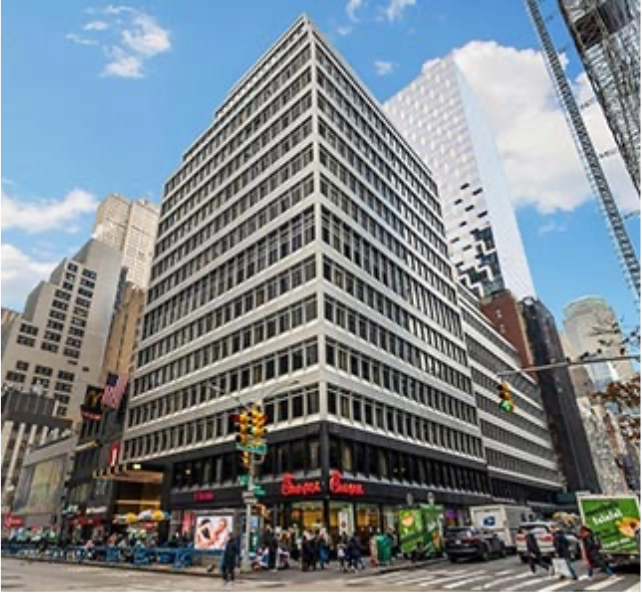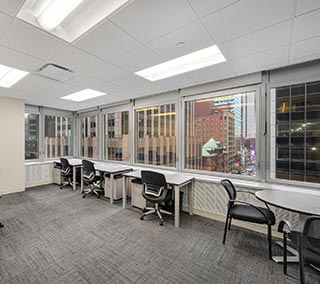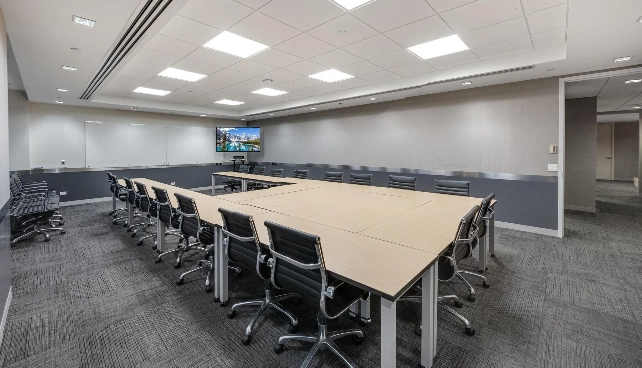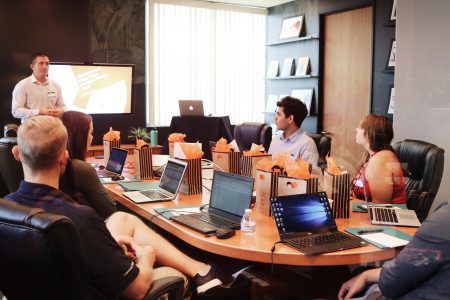Let’s say, for argument’s sake, that you’re a rational business owner. You know that the survival and growth of your company depends on attracting the most talented employees the market has to offer, and providing them with an environment that allows them to productively put their skills to good use.
Recent studies have shown that if you’re a small or mid-sized business in 2018, it’s super unlikely that young professional corporate killers are going to be breaking down your door begging you to take their resumes. It’s more likely that they’re rushing to Angel.co to get in good with a hot new startup where they can be a big fish in a small pond, and potentially make a big splash in their industry (If you’re wondering, the answer is yes. I do hate myself a little for that pun).
. . .
This has been the case with Generation Y, the now dominant workforce demographic in the United States. Born roughly between 1980 and 2000, this group has been shown to be the best educated, the most technologically savvy, and the most productive workforce in the history of civilization.
No. There is absolutely no hyperbole here. It really is that serious.
Most worrisome of all: They know that their advantages give them the pick of the litter when they’re looking for places to work.
So what exactly does this mean for us as mid-sized companies?
Well first of all, casual Fridays and free snacks are no longer relevant incentives to attract employees. While perks like this may have had some sway a decade and a half ago, they are now laughed at by a workforce that’s obsessed with hardcore personal development and a successful career. They’re interested in contributing the most and being known for it, both to their companies as well as to the world at large.
. . .
Smart companies are taking notice of these trends (I mean, the smartest companies are the ones who set these trends, but I’ll dive into that in a separate article).
Obviously the Googles and Facebooks of the world can provide the most in terms of employee satisfaction: The most psychologically healthy office space; the most prospects for personal development and career gain; even child care centers in some of their complexes so that being a full-time worker doesn’t get in the way of being a great parent.
But these guys are behemoths with very deep pockets, so it doesn’t make sense to categorize our <500 employee companies with them. We must be more tactical and more creative with our approach to attracting talent. In certain cases, we will have to create something from nothing.
Keep the following concepts in mind as you’re working to build your world dominating team.
. . .
“Mr. or Mrs. Employer, why are you hiring me?”
Is it because you value my skill and my energy, and because you’re excited to see how I can build your business? Or is it because you want to stick me in front of a screen for eight to ten hours a day and have me perform the same mind-numbing task, without any insight on how my work is contributing to the bigger picture of the company?
If it’s the latter, then you can forget about it. It’s 2018, and I don’t really care what your needs are; I have my own. Now, if your biz dev goals and my career goals just so happen to find a happy middle ground, then I’ll be more than happy to work for you. Just make sure you keep me in the loop about why I matter here, and give me a workspace that enables me to get my job done without mentally draining me.
. . .
“Jesus man, your office looks like a prison cell.”
Here’s a little food for thought:
Stephen Kellert, a social ecologist at Yale University claims that poor office design is a sign that we don’t see ourselves as animals that have biological needs; needs that can wreak havoc on our psyche if left unfulfilled.
“We consider it ‘inhumane’ to keep a gorilla in an indoor, concrete environment with no exposure to greenery or anything resembling its natural habitat, and yet we put ourselves in these environments all the time.” – Stephen Kellert
A mentally stimulating workspace is no longer an afterthought; it’s a crucial element that if ignored will obliterate morale, and ensure the downward spiral of your output capacity and the quality of your offering.
A new coat of emotionally stimulating paint (whites and beiges have been shown to cause mental fatigue) can work wonders for an otherwise flat space. If you don’t have a window available, then at least show your current and potential workers that you care about their psychological well-being by saturating the office with plants and artwork. It’s an inexpensive way to viscerally energize the mind, inspiring employees to work longer hours with more mental horsepower and less fatigue.
. . .
“Work drains every inch of life out of me. I’m really not looking forward to coming in tomorrow.”
Companies where employees feel like this are destined for doom. There’s no way around it. If your space has been designed as a ‘work work work’ environment, then sorry to break it to you, you have failed.
I mean, congratulations! You’ve saved a lot of money by furnishing your space with drab little desks clumped too close together, cheap fluorescent lighting, and the barest possible walls imaginable. I’m sure your workers will be productive in an office that feels like a modern-day internment camp.
A great work environment must do an excellent job of taking employees’ minds off work. Don’t be fooled, they know why they’re in the office. They know they’re not here to lounge around. A few comfortable couches, a fully stocked kitchen, and some space to move around in will not take their minds off work. In fact, it’ll make your workers exponentially more productive because they’ll be comfortable in their workspace.
Getting important value-creating activities done will not feel like the chore that it usually is. Your output will skyrocket as your employees start subconsciously seeing work as relaxation.
. . .
Let’s not fool ourselves ladies and gentlemen, the market is changing. We can’t stay competitive unless our company cultures and office environments match the newfound energy of the workforce.
Stimulating the imagination is key, and enlisting your workspace to do that for you is the simplest place to start. Be smart. Don’t waste the opportunity.





